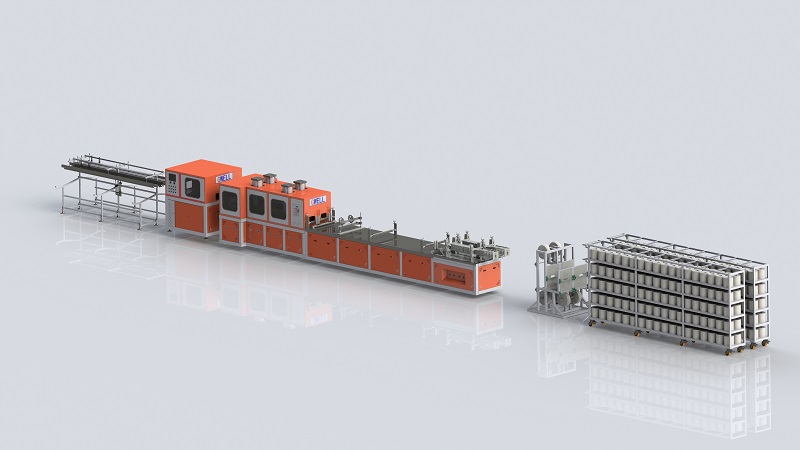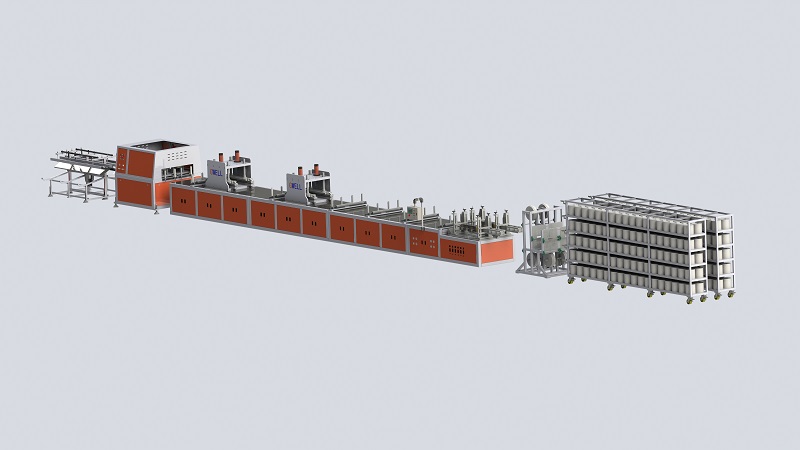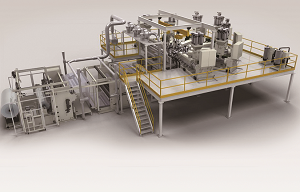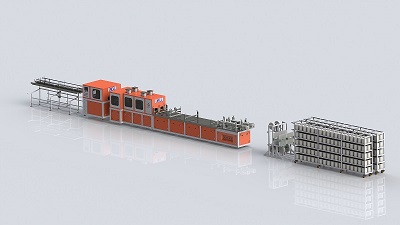
polyurethane pultrusion production line(caterpillar type)
The main production method of composite photovoltaic frames is two-component polyurethane+glass fiber extrusion molding. Pultrusion molding refers to the process of producing composite profiles by heating continuous fibers or their fabrics impregnated with resin through molds under the action of traction equipment. It has the advantages of controllable fiber content, high raw material utilization rate, and high production efficiency.
The core equipment for polyurethane composite material extrusion molding includes extrusion equipment, glue injection machine, and frame mold. The conventional pultrusion production line consists of a yarn frame, a soaking tank, a shaping mold, a traction device, and a cutting device. The pultrusion products have advantages such as lightweight, high strength, and corrosion resistance, and are widely used in new energy, medical, communication, and power transmission fields such as construction, transportation, wind power, and photovoltaics.

polyurethane pultrusion production line(hydraulic type)
Compared to traditional aluminum and metal photovoltaic frames, polyurethane photovoltaic frames have the following advantages:
1. Polyurethane composite materials have excellent mechanical properties, and their axial tensile strength reaches more than 7 times that of traditional aluminum alloy materials.
2. It has strong resistance to salt spray and chemical corrosion.
3. Having a high volume resistivity, the photovoltaic modules are packaged with polyurethane frames, greatly reducing the possibility of forming leakage circuits and helping to reduce the occurrence of PID potential attenuation. Improved the power generation efficiency of the battery panel.
4. Polyurethane frames can also be used in conjunction with water-based polyurethane coatings, greatly increasing the weather resistance of the frames and having extremely low VOC emissions.





